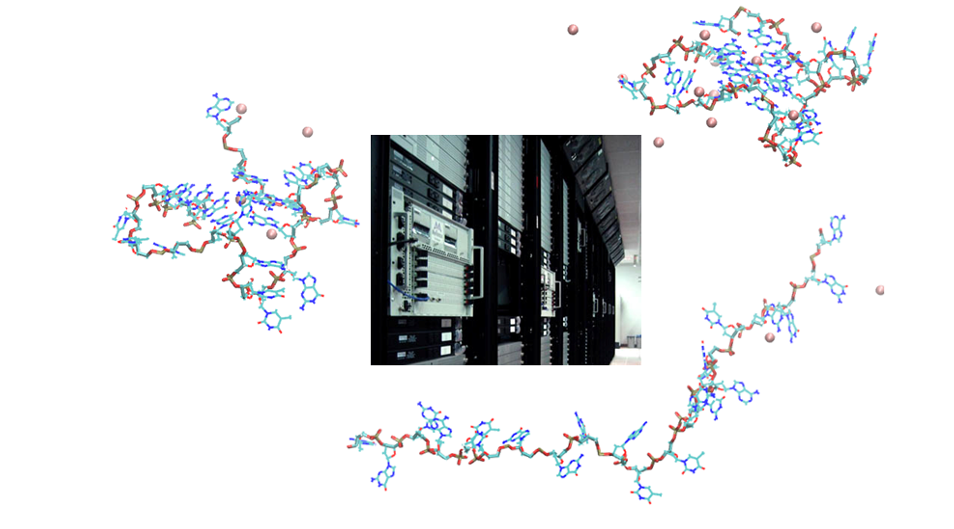Computational Biophysics

In computational and theoretical biophysics, we use theoretical concepts from physics to study and to explain biological systems. The properties of biological systems are based on the complicated interplay and dynamics of a large number of molecular components. Computational methods allow us to investigate the structure and dynamics of biological molecules essential for their function. It is possible to investigate structure formation and association of biomolecules at atomic resolution and to analyse the underlying structure-forming forces and thermodynamic and kinetic parameters. Many still unanswered questions about the mechanism of specific structure formation can thus be elucidated by computational methods.
Biological systems are highly dynamic not only at the molecular level but also in higher organisational units such as cell organelles or whole cells. Here, stochastic processes far from thermodynamic equilibrium often play an essential role. The interplay of these processes determines and regulates cellular processes and leads to the self-organisation of cellular structures. For example, stochastic processes take place in cells that consume biochemical energy and thus generate a directed movement. With the help of mathematical methods and computational approaches on mesoscopic scales, models can be created to describe and explain such processes. In this context the principles of organisation and regulation of stochastic processes in cells and their development in the course of evolution are still largely unknown and an important aspect of our work in computational biophysics.